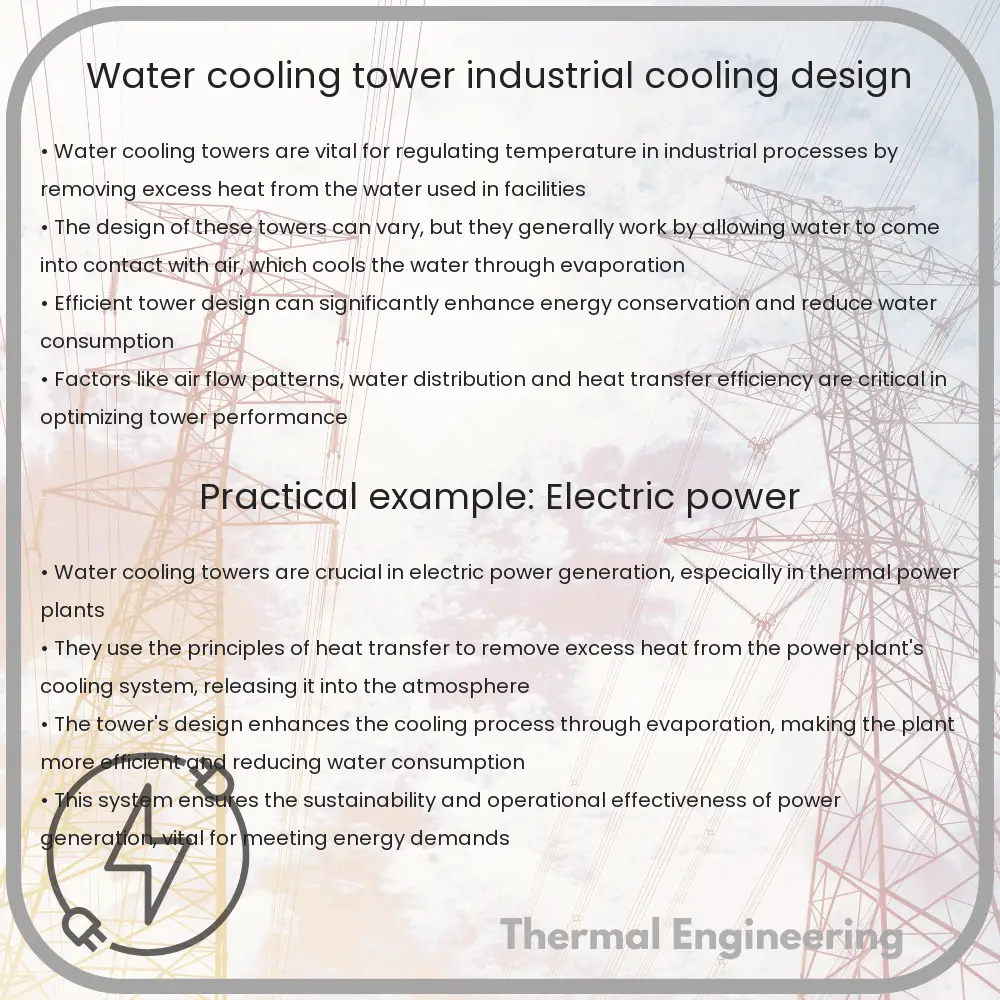Learn about water cooling towers, their operational principles, types, design considerations, and their critical role in industrial applications.

Understanding Water Cooling Towers in Industrial Applications
Water cooling towers are a crucial component in many industrial processes, particularly in areas such as power generation, manufacturing, and HVAC systems for large buildings. These towers are designed to remove excess heat from a cooling system by lowering the temperature of water. In this article, we explore the basic principles behind water cooling towers, their design, and their significance in industrial applications.
How Water Cooling Towers Work
The fundamental operation of a water cooling tower revolves around heat exchange and evaporation. Hot water from industrial processes is pumped into the tower, where it is allowed to flow through fill materials. These materials increase the contact surface area and contact time between air and water. As air is drawn through the tower, usually by natural draft or mechanical means, it absorbs the heat from the water, causing a small amount of water to evaporate. This evaporation process removes heat from the water, thus cooling it.
Types of Cooling Towers
- Natural Draft Towers: Utilize the buoyancy of the warm air rising to draw cool air in from the bottom, hence operating without mechanical fans. They are typically very large structures, often used in power stations.
- Mechanical Draft Towers: These towers use large fans to force or draw air through circulated water. They can be further categorized into:
- Forced Draft: Fans are located at the air inlet and push air through the tower.
- Induced Draft: Fans are situated at the top, pulling air through the tower.
Mechanical draft towers are more effective than natural draft towers and can be operated in a more controlled manner.
Cooling Tower Design Considerations
Designing a water cooling tower involves several considerations to ensure effectiveness, efficiency, and durability:
- Heat Load: The total heat to be removed from the cooling water system during operation is a critical factor. It determines the size and type of tower required for effective cooling.
- Airflow: Adequate airflow is essential for the evaporation process. The design must ensure that there is enough air movement, either by natural or mechanical means, to maintain efficient heat transfer.
- Water Properties: Water quality can affect tower operation since impurities can lead to scale buildup, corrosion, and biological growth. Water treatment systems are often necessary to maintain water quality.
- Environmental Factors: Ambient temperature, humidity, and seasonal variations can affect performance. Tower designs often include allowances for these factors.
- Energy Consumption: Particularly in mechanical draft towers, energy efficiency is an important consideration due to the cost of running fans and pumps.
Materials Used in Construction
Cooling towers are constructed from materials that can withstand prolonged exposure to moisture and varying temperatures. Common materials include:
- Fiberglass: Known for its longevity and resistance to corrosion, making it ideal for parts like the casing and fans.
- Galvanized Steel: Often used for the frame structure, galvanized steel provides a good balance of durability and cost-effectiveness, though it is susceptible to corrosion over time.
- Concrete: Typically used in natural draft cooling towers, concrete can support very large structures and resist chemical and biological corrosion.
The choice of materials impacts the initial cost, lifespan, and maintenance schedule of the cooling tower.
Conclusion
Water cooling towers play a pivotal role in many industrial sectors by effectively managing heat waste. Their design integrates engineering principles with practical and environmental considerations to optimize performance and cost. Understanding how these towers function and are designed can help in selecting the right cooling solution for specific industrial needs.
For engineers and facility managers, continually assessing and maintaining the efficiency of water cooling towers is vital for operational continuity and energy management in industrial environments.